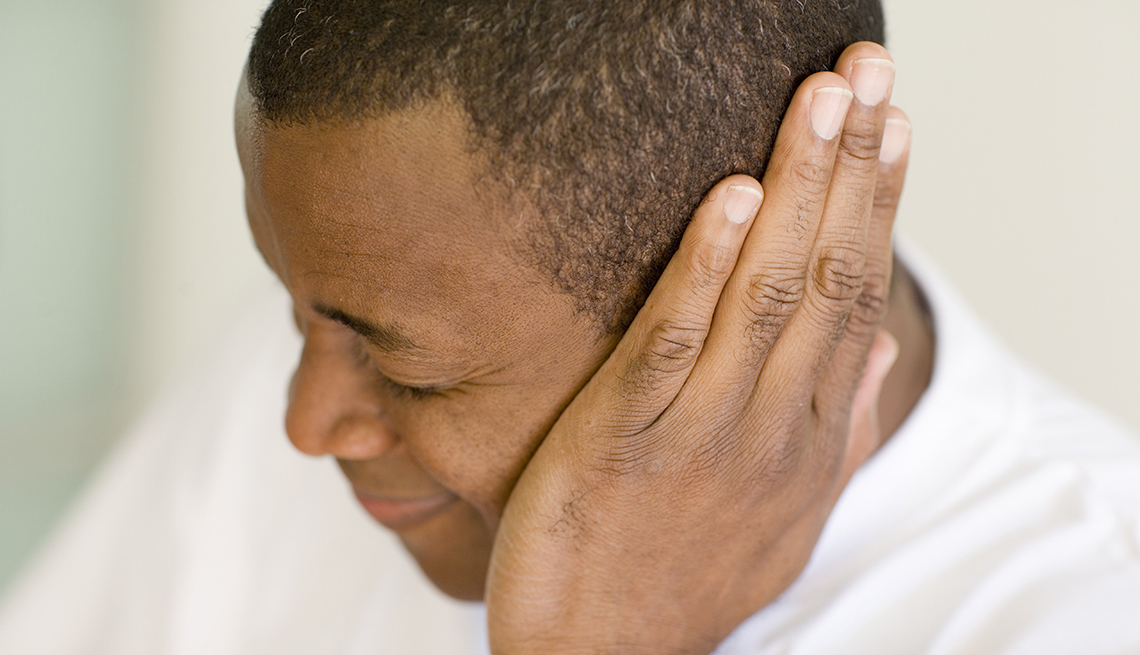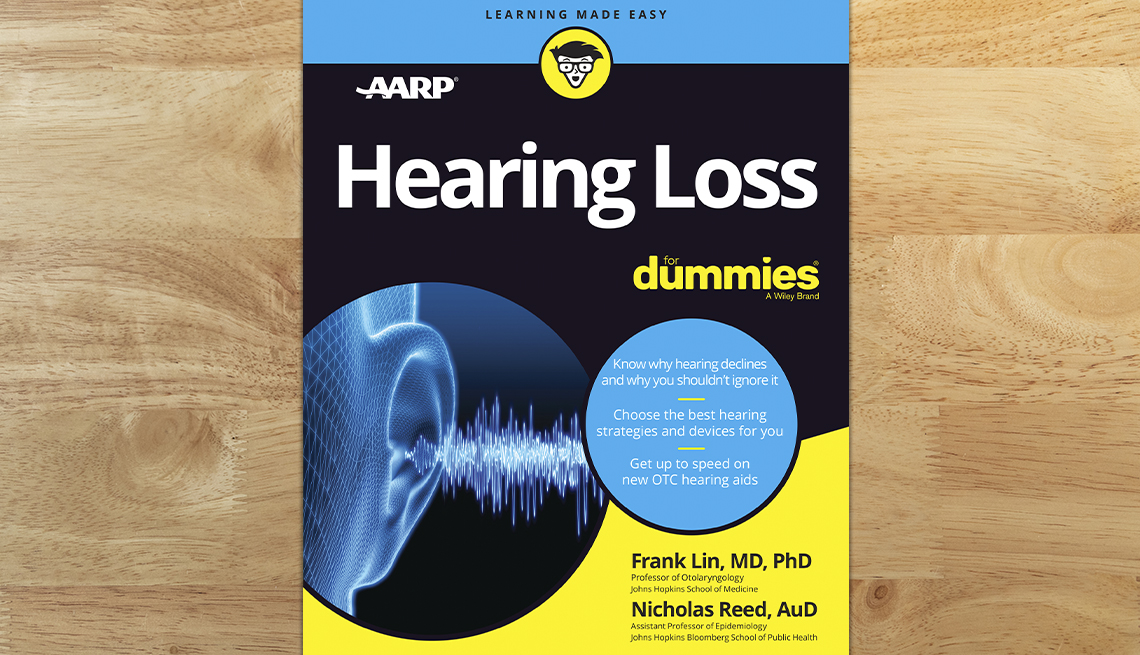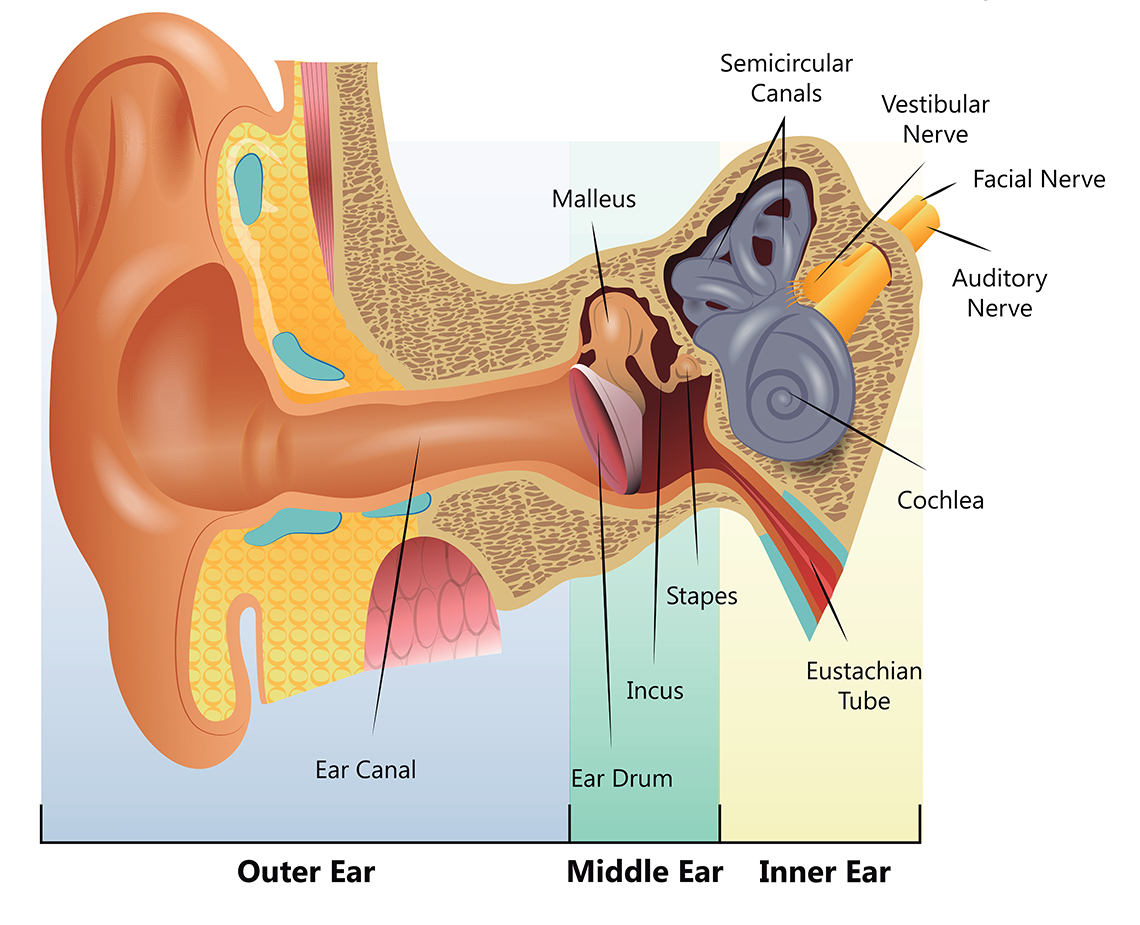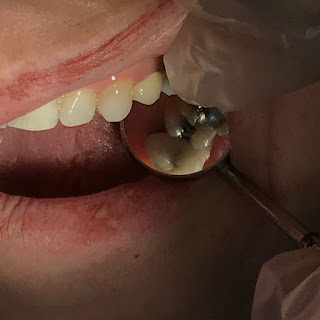3 Types of Ear Infections That Can Affect Your Hearing - AARP
En español
Adapted from AARP's Hearing Loss for Dummies, by Frank Lin, M.D., and Nicholas Reed, Au.D.
Everyone at some point has heard of someone getting an ear infection, but most people don't know it can affect your hearing, either temporarily or permanently. So what causes ear infections, and what can you do about them?
An ear infection can actually involve any of the three parts of the ear — external, middle, and inner.
Infections of the external or middle ear generally just lead to a temporary conductive hearing loss until the infection resolves, whereas infections of the inner ear often lead to a permanent sensorineural hearing loss. (See box on types of hearing loss.)
1. External ear infections
An external ear infection involves the skin of the ear canal becoming infected. This can be triggered by too much moisture in the ear canal (often known as "swimmer's ear"), which makes it easier for bacteria to grow in the ear canal. Another common cause is when someone sticks their finger or a cotton swab in the ear and inadvertently traumatizes the skin, leading to an infection.
External ear infections often come with pain, swelling, and drainage from the ear, and may occasionally be accompanied by a temporary decrease in hearing related to swelling or infected material in the ear canal that prevents sound from getting to the eardrum. Once this infection resolves, the transient hearing loss resolves as well.
If you think you have an external ear infection, contact your primary care physician or an ENT (ear, nose, and throat doctor), because you may need the ear cleaned and antibiotic ear drops or pills.
2. Middle ear infections
Middle ear infections generally occur when fluid accumulates in the middle ear space and gets infected, leading to a temporary conductive hearing loss. To understand how this happens, let's take a look at the role of the mysterious Eustachian tube.
This is a fancy term for a narrow tube that connects the middle ear space to the very back of the nose. This tube is critically important, because it's the structure that allows air to move back and forth between the middle ear and the outside environment.
The air in the middle ear space is constantly getting absorbed by the lining of the middle ear, which is similar to the lining of the lungs. The cells of this lining are designed to absorb air. The Eustachian tube, therefore, allows "new" air to get in from the outside to replenish the air in the middle ear as it is gradually absorbed over the course of the day.
Ear Diagram
Imagine what would happen if the Eustachian tube weren't open and air couldn't get to the ear to replenish the air that's getting absorbed. In this case, the middle ear space would rapidly become a vacuum (in other words, there wouldn't be enough air pressure) because the air would be absorbed by the lining of the middle ear. As you may have heard, "Nature abhors a vacuum," and it's true here as well! With a vacuum in the middle ear, the middle ear space gets filled with fluid that's sucked out of the cells lining the middle ear. It sounds a bit crazy, but it's true.
Fluid collecting in the middle ear can lead to a sense of pressure and fullness in the ear as well as a temporary hearing loss, as sounds can't be transmitted effectively to the inner ear through the fluid. If the fluid gets infected, you'll also notice lots of pain, which may be accompanied by a fever. If you think you have a middle ear infection, you'll definitely want to see your primary care physician or an ENT, because you may need oral antibiotics to treat the ear infection.
Middle ear infections can most often be triggered by getting a cold or having nasal allergies. In these cases, the lining of the nose and the back of the throat can get swollen and inflamed, which blocks the opening around the Eustachian tube, preventing air from getting back and forth.
The good news is that the hearing loss caused by a middle ear infection is only temporary until the infection resolves and the fluid in the middle ear drains out through the Eustachian tube.
3. Inner ear infections
Unlike external and middle ear infections, which are relatively common and have symptoms that resolve after being treated, inner ear infections are relatively rare and far more dangerous to your hearing. The inner ear is generally resistant to ear infections, since it's hard for bacteria and viruses to get into and infect the fluid of the inner ear. Unfortunately, while it's rare, scientists estimate that about 1 in 10,000 to 50,000 people a year get inner ear infections.
In these cases, doctors think that most commonly some type of virus manages to get into the inner ear and damage the inner ear, leading to a sudden loss of hearing. Not surprisingly, it's called a sudden sensorineural hearing loss (SSNHL — ear doctors have absolutely no imagination or creativity when it comes to naming diseases!). SSNHL is an urgent medical condition. The earlier it's diagnosed and treated (ideally within three to five days), the better the chance of some recovery of hearing. The key thing to note about an SSNHL is that the hearing loss comes on suddenly — over a period of minutes — and often completely out of the blue in just one ear. In contrast, hearing loss from an external or middle ear infection is not nearly so sudden or severe, is often accompanied by other symptoms, and may affect both ears. If you experience a sudden change in hearing, see an ear, nose, and throat doctor (ENT) immediately.
Types of Hearing Loss
- Sensorineural hearing loss is the most common type of hearing loss, caused by cellular damage in the inner ear. It can be treated with communication strategies, hearing aids, or cochlear implants, but it is not reversible by any pharmacologic or surgical intervention at this time.
- Conductive hearing loss is when sound cannot get to the inner ear to be encoded and sent to the brain. Examples of conductive hearing loss include external and middle ear infections, impacted earwax, fluid in the ears, or a growth in the middle ear space — anything that blocks sound from getting to the inner ear. An ear, nose, and throat doctor (ENT) can correct many conductive losses.
- Mixed hearing loss is when an individual has both sensorineural and conductive hearing loss. For example, a person may have a mild sensorineural hearing loss but then gets a cold that causes the middle ear space to fill with fluid, which prevents sound from getting to the inner ear.
Copyright © 2022 by John Wiley & Sons, Inc. Adapted with permission from AARP's Hearing Loss for Dummies by Frank Lin, MD, and Nicholas Reed, AuD, published by John Wiley & Sons, Inc.
More on Hearing Loss
- Free telephone hearing test for AARP members
- 3 reasons hearing loss may increase dementia risk
- Medications that can harm your hearing




Comments
Post a Comment